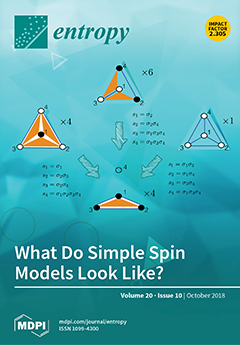Open AccessArticle
The Interaction Analysis between the Sympathetic and Parasympathetic Systems in CHF by Using Transfer Entropy Method
by
Daiyi Luo 1,2,3,†, Weifeng Pan 1,2,3,†, Yifan Li 1,2,3, Kaicheng Feng 1,2,3 and Guanzheng Liu 1,2,3,*
1
School of Biomedical Engineering, Sun Yat-sen University, Guangzhou 510275, China
2
Key Laboratory of Sensing Technology and Biomedical Instrument of Guangdong Province, School of Engineering, Sun Yat-sen University, Guangzhou 510275, China
3
Guangdong Provincial Engineering and Technology Centre of Advanced and Portable Medical Device, Guangzhou 510275, China
†
These authors contributed equally to this work.
Cited by 12 | Viewed by 4369
Abstract
Congestive heart failure (CHF) is a cardiovascular disease associated with autonomic dysfunction, where sympathovagal imbalance was reported in many studies using heart rate variability (HRV). To learn more about the dynamic interaction in the autonomic nervous system (ANS), we explored the directed interaction
[...] Read more.
Congestive heart failure (CHF) is a cardiovascular disease associated with autonomic dysfunction, where sympathovagal imbalance was reported in many studies using heart rate variability (HRV). To learn more about the dynamic interaction in the autonomic nervous system (ANS), we explored the directed interaction between the sympathetic nervous system (SNS) and the parasympathetic nervous system (PNS) with the help of transfer entropy (TE). This article included 24-h RR interval signals of 54 healthy subjects (31 males and 23 females, 61.38 ± 11.63 years old) and 44 CHF subjects (8 males and 2 females, 19 subjects’ gender were unknown, 55.51 ± 11.44 years old, 4 in class I, 8 in class II and 32 in class III~IV, according to the New York Heart Association Function Classification), obtained from the PhysioNet database and then segmented into 5-min non-overlapping epochs using cubic spline interpolation. For each segment in the normal group and CHF group, frequency-domain features included low-frequency (LF) power, high-frequency (HF) power and LF/HF ratio were extracted as classical estimators of autonomic activity. In the nonlinear domain, TE between LF and HF were calculated to quantify the information exchanging between SNS and PNS. Compared with the normal group, an extreme decrease in LF/HF ratio (
p = 0.000) and extreme increases in both TE(LF→HF) (
p = 0.000) and TE(HF→LF) (
p = 0.000) in the CHF group were observed. Moreover, both in normal and CHF groups, TE(LF→HF) was a lot greater than TE(HF→LF) (
p = 0.000), revealing that TE was able to distinguish the difference in the amount of directed information transfer among ANS. Extracted features were further applied in discriminating CHF using IBM SPSS Statistics discriminant analysis. The combination of the LF/HF ratio, TE(LF→HF) and TE(HF→LF) reached the highest screening accuracy (83.7%). Our results suggested that TE could serve as a complement to traditional index LF/HF in CHF screening.
Full article
►▼
Show Figures






